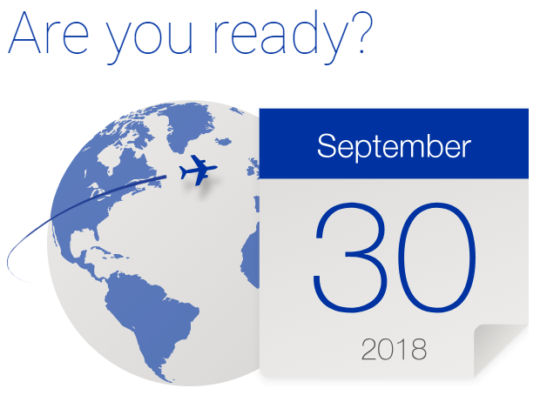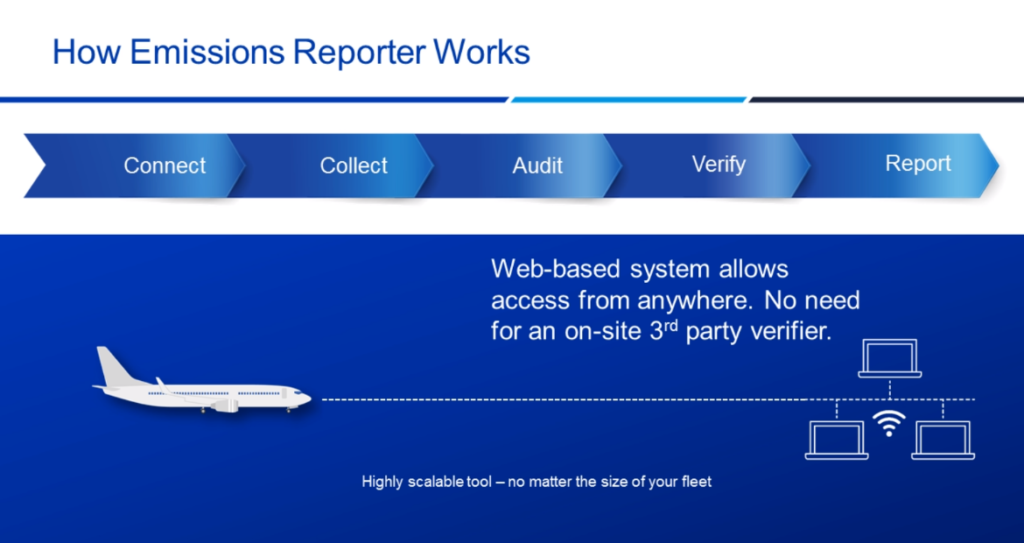8 Tips to Help You Prepare for CORSIA
As you may have heard, new aviation emissions regulations are coming in the form of CORSIA. As this blog post explains, CORSIA is a CO2 emissions reporting and offsetting plan implemented by ICAO to get the international aviation industry carbon neutral from 2020.
If you’re eligible for reporting and offsetting (read this if you’re not sure), you need to take some steps to get ready – and we’re here to help!
1. Figure out if you’re eligible
Not all routes are eligible for CORSIA, but most are. In fact, if you fly internationally, you’re probably eligible. To check your eligibility, read our blog on How CORSIA will Affect You and experiment with our free CORSIA calculator.

2. Get ready for more reporting
You probably already have emissions monitoring capabilities in place as you track fuel usage internally. If you’ve been complying with EU ETS in the past, you’re familiar with the concept of reporting.
Your monitoring methods can be altered as needed in accordance with CORSIA. However, this is not a job that most operators can throw at one person once a year. This will require input from a cross-functional team from different areas of the organization who will spend a significant amount of their time involved in CORSIA reporting.

3. Plan to adhere to both EU ETS and CORSIA
EU ETS is not going away in the foreseeable future, so you need to plan for both EU ETS’s and CORSIA’s requirements. As we said, you can adjust your monitoring plan so that it will support both CORSIA and EU ETS.
However, you must keep in mind that you can’t buy EU ETS credits and double-count them as CORSIA offsetting credits. EU ETS and CORSIA are separate programs, so you must budget to buy both CORSIA offsetting credits and EU ETS carbon credits.
4. Start getting ready now
Regulations like these mean you need to start planning now.

Implementing an EU ETS plan at a major airline can take a long time (we’re talking years) so you need to get started on your CORSIA implementation plans ASAP. Your Emissions Monitoring Plan must be submitted by February 28, 2019; however, we recommend submitting it by September 30, 2018 so you can get your approval back before monitoring begins on January 1, 2019.
5. Don’t leave all the reporting until right before reports are due
CORSIA reporting is not a task to be tossed in one person’s direction a few weeks before the due date each year. Pulling the data for a reporting year and getting it ready for verification takes months, so budget time and resources for this.
6. Begin budgeting for carbon offsetting costs
Start earmarking funds for offsetting credit costs. You’re going to have to start monitoring your emissions in 2019, so you’ll have a few years of monitoring to get an idea of how many credits you’ll have to purchase.
Keep in mind that each year’s emissions offsetting is based on the previous year’s offsetting emissions multiplied by the sector growth factor determined by ICAO. You can learn more about the requirements and implementation phases here.

7. Investigate sustainable alternative fuel options
We all know how fossil fuels harm the environment, which is why ICAO is trying to limit and counteract their effects through CORSIA. Not only can you reduce your carbon footprint by using sustainable alternative fuels, but you can also reduce the amount of emissions you have to offset. You should look into these sources now to see if the cumulative savings over the years could help make CORSIA less of a burden to your bottom line.
8. Check out some programs that can assist with MRV
Jeppesen isn’t going to leave you in the lurch as you prepare to implement CORSIA monitoring, reporting, and verification (MRV). Now would be a good time to start looking into emissions reporting software to help you gather, compile, and submit your emissions data.
Jeppesen’s Emissions Reporter was built 10 years ago to help operators centralize and report emissions data for EU ETS, and it’s now ready for CORSIA requirements too. You can learn more about Emissions Reporter here.

CORSIA is coming, whether your operation is ready or not. It’s best to determine now how CORSIA will affect your operation and be sure to review ICAO’s website for more details on CORSIA. For a more general overview of CORSIA’s phases, check here.
As you may have heard, new aviation emissions regulations are coming in the form of CORSIA. As this blog post explains, CORSIA is a CO2 emissions reporting and offsetting plan implemented by ICAO to get the international aviation industry carbon neutral from 2020.
If you’re eligible for reporting and offsetting (read this if you’re not sure), you need to take some steps to get ready – and we’re here to help!
1. Figure out if you’re eligible
Not all routes are eligible for CORSIA, but most are. In fact, if you fly internationally, you’re probably eligible. To check your eligibility, read our blog on How CORSIA will Affect You and experiment with our free CORSIA calculator.

2. Get ready for more reporting
You probably already have emissions monitoring capabilities in place as you track fuel usage internally. If you’ve been complying with EU ETS in the past, you’re familiar with the concept of reporting.
Your monitoring methods can be altered as needed in accordance with CORSIA. However, this is not a job that most operators can throw at one person once a year. This will require input from a cross-functional team from different areas of the organization who will spend a significant amount of their time involved in CORSIA reporting.

3. Plan to adhere to both EU ETS and CORSIA
EU ETS is not going away in the foreseeable future, so you need to plan for both EU ETS’s and CORSIA’s requirements. As we said, you can adjust your monitoring plan so that it will support both CORSIA and EU ETS.
However, you must keep in mind that you can’t buy EU ETS credits and double-count them as CORSIA offsetting credits. EU ETS and CORSIA are separate programs, so you must budget to buy both CORSIA offsetting credits and EU ETS carbon credits.
4. Start getting ready now
Regulations like these mean you need to start planning now.

Implementing an EU ETS plan at a major airline can take a long time (we’re talking years) so you need to get started on your CORSIA implementation plans ASAP. Your Emissions Monitoring Plan must be submitted by February 28, 2019; however, we recommend submitting it by September 30, 2018 so you can get your approval back before monitoring begins on January 1, 2019.
5. Don’t leave all the reporting until right before reports are due
CORSIA reporting is not a task to be tossed in one person’s direction a few weeks before the due date each year. Pulling the data for a reporting year and getting it ready for verification takes months, so budget time and resources for this.
6. Begin budgeting for carbon offsetting costs
Start earmarking funds for offsetting credit costs. You’re going to have to start monitoring your emissions in 2019, so you’ll have a few years of monitoring to get an idea of how many credits you’ll have to purchase.
Keep in mind that each year’s emissions offsetting is based on the previous year’s offsetting emissions multiplied by the sector growth factor determined by ICAO. You can learn more about the requirements and implementation phases here.

7. Investigate sustainable alternative fuel options
We all know how fossil fuels harm the environment, which is why ICAO is trying to limit and counteract their effects through CORSIA. Not only can you reduce your carbon footprint by using sustainable alternative fuels, but you can also reduce the amount of emissions you have to offset. You should look into these sources now to see if the cumulative savings over the years could help make CORSIA less of a burden to your bottom line.
8. Check out some programs that can assist with MRV
Jeppesen isn’t going to leave you in the lurch as you prepare to implement CORSIA monitoring, reporting, and verification (MRV). Now would be a good time to start looking into emissions reporting software to help you gather, compile, and submit your emissions data.
Jeppesen’s Emissions Reporter was built 10 years ago to help operators centralize and report emissions data for EU ETS, and it’s now ready for CORSIA requirements too. You can learn more about Emissions Reporter here.

CORSIA is coming, whether your operation is ready or not. It’s best to determine now how CORSIA will affect your operation and be sure to review ICAO’s website for more details on CORSIA. For a more general overview of CORSIA’s phases, check here.